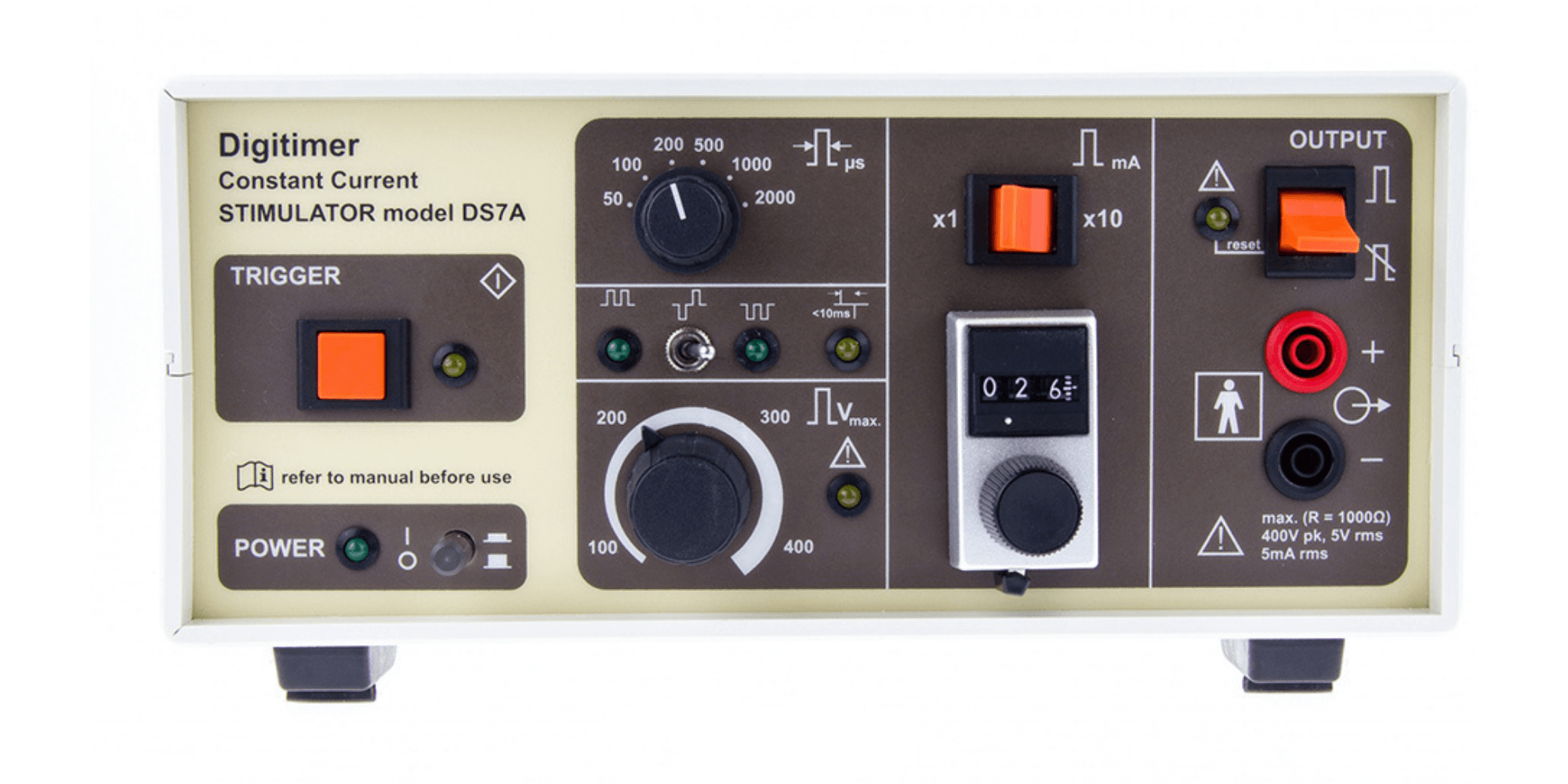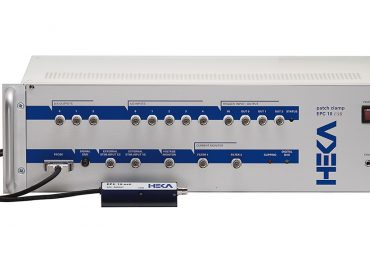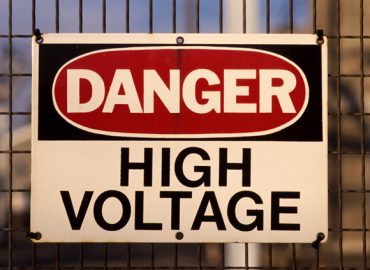Peripheral nerve stimulators
Which is the best for my pain research?
Pain is a huge area within human neuroscience research.
For decades, scientists around the world have investigated the complex mechanisms of pain. In many of these studies, electrical stimulators developed at Digitimer Ltd, have been chosen for safe and effective stimulation of peripheral nerves.
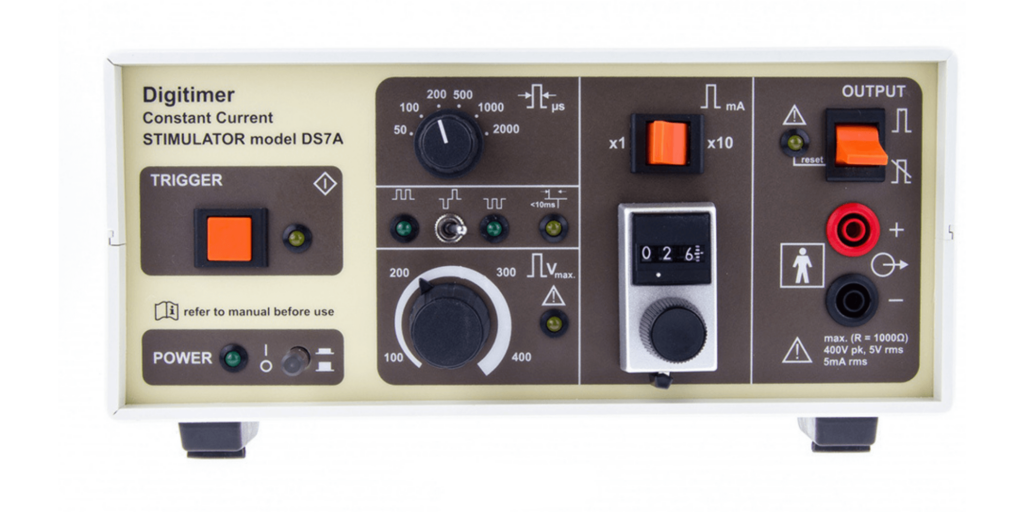
The majority of our peripheral stimulators deliver isolated, monophasic, rectangular, constant current pulses, in response to a TTL pulse or digital trigger input – making them ideal options for pain research and studies of pain management. However, our DS7A has proven (by far) to be the most popular in this field of research.
In fact, the DS7A is regarded by many scientists and clinicians as the ‘gold standard’ for safe electrical nerve stimulation in humans.
Here we examine why this is the case.
The DS7A – our first recommendation for most pain research
- High current and voltage capabilities
Ultimately, the DS7A is simple to use and designed to deliver safe, high-voltage electrical stimulation.
It’s capable of providing an isolated constant current of 0-100mA, from a voltage source of up to 400V. Which means it’s perfectly suited to pain research studies. This is particularly true where current stimulation needs to be applied through electrodes with a low surface area (high impedance) – as these often require much higher voltages, even when the current amplitudes are relatively modest.
- Manually adjustable pulse duration
Not only does the DS7A feature precise and manually adjustable controls for pulse duration (50µs to 2ms) and amplitude (0-100mA), but it also includes external trigger options – including a foot/hand switch or a digital (TTL compatible) trigger. As a result, it can be employed for single stimulation pulses and repetitive stimulation applications, with frequencies as high as 1kHz.
Again, this makes it a suitable option for pain studies – particularly those intended to evoke secondary hyperalgesia.
- Certified for medical use
The DS7A is a CE-marked medical device, cleared by the FDA for marketing in the USA – which can make it much quicker and easier to obtain ethical approval for pain research applications.
3 exceptions to the ‘DS7A rule’
For the majority of pain research applications – over 35 years after it was launched – the DS7A is still our recommended device for peripheral nerve stimulation.
However, there are some exceptions to this, and certain research protocols may be better suited to a different nerve stimulator from our range.
Exception #1 – If you’re planning to go deeper
If your research involves stimulating deep peripheral nerves, the DS7AH may be a better option.
Successfully overcoming the difficulties associated with stimulating deep nerves with large electrodes, this allows currents up to 1A (compared to 0-100mA), from a source voltage of 400V.
In order to do this and keep the pulse energy maximum below 50mJ, it also has a reduced maximum pulse duration of 200µs. However, it’s still a CE-marked medical device, and aside from these differences in constant current and pulse duration, it boasts all the same beneficial features as the DS7A.
Alternatively, the DS7R could be the most practical choice.
Designed for use in human research, this nerve stimulator isn’t medically approved, but it is capable of delivering 999mA constant current, high voltage pulses – at a pulse duration of 50µs-2ms. This means it’s perfect for studies which demand high currents with the flexibility of longer pulses.
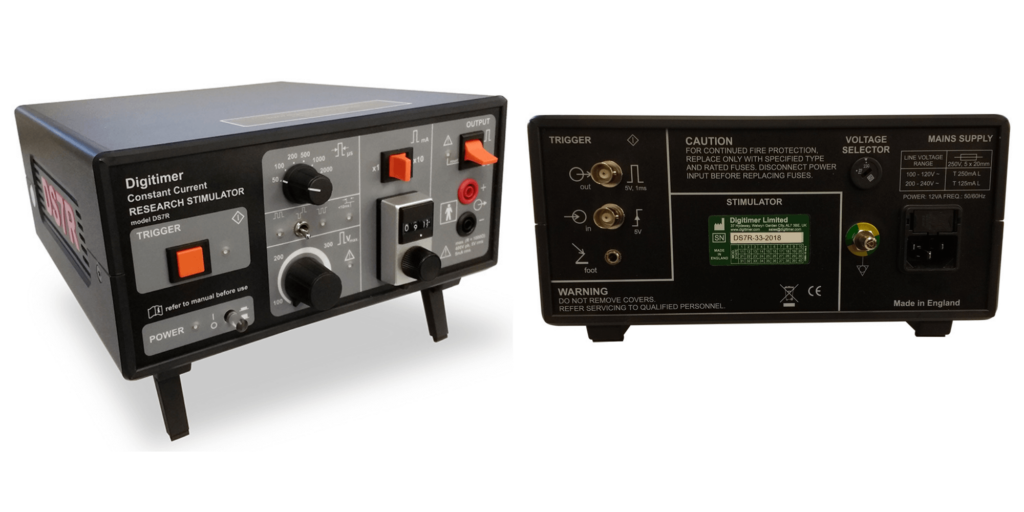
Exception #2 – If you wish to use novel pulse shapes
For research that demands greater control over the pulse shape, the DS5 may be recommended.
Whilst the DS7A produces a rectangular output pulse – characterised by a sharp rising edge, plateau phase and a rapid return to the baseline – the DS5 pulse shape is determined by the profile of a voltage signal. Essentially, the stimulator translates this voltage signal into an isolated constant current stimulus (up to 50mA), precisely replicating the shape of the input waveform.
In this way, it acts like a voltage to isolated current amplifier – allowing the user to define completely arbitrary stimulus shapes (including sine waves or random noise). This means that the DS5 could be of interest to anyone wishing to control surface electrical stimulation protocols using a command voltage waveform. For example, semi-automated pain research or sensory threshold testing.
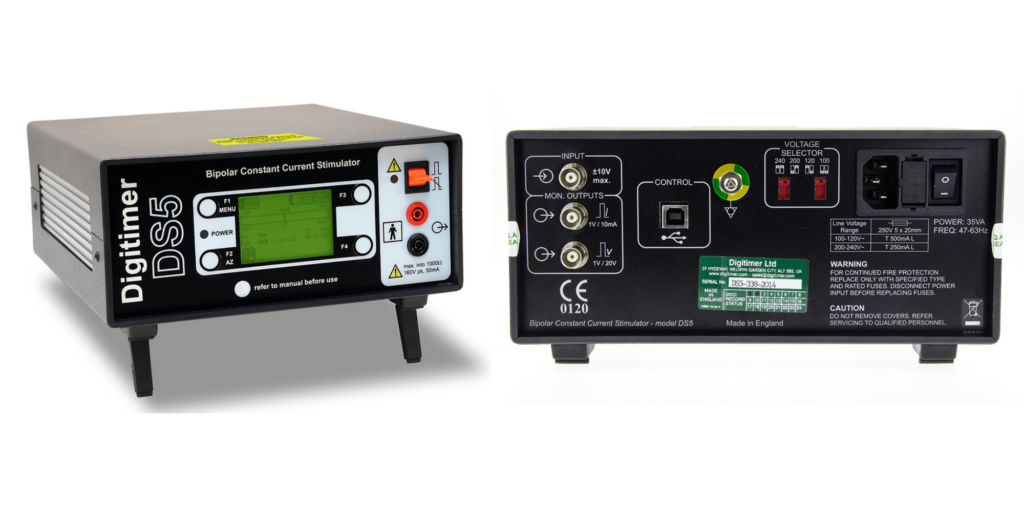
Exception #3 – If you need different forms of external control
If it’s particularly important to your research that you can quickly and conveniently adjust stimulus settings (i.e. current and duration), but you still want to deliver triggered, rectangular pulses, our advanced DS8R could be a better choice.
Just like the DS7A, this can be operated as a standalone isolated stimulator with full control via the front panel. However, in addition, the stimulus settings can also be modified using Windows PC control software (which is supplied with the device) via a USB interface.
Not only does this software provide a virtual front panel for the stimulator, but crucially, it also incorporates an API – allowing the operator to control settings from custom or commercially available software packages, such as CED Signal/Spike2, Python or Matlab.
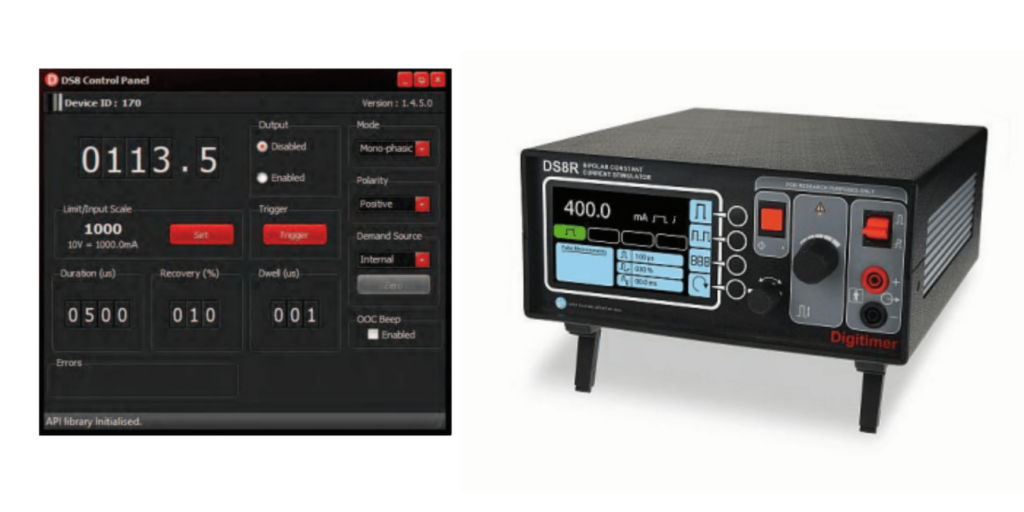
Need tailored advice on our peripheral stimulators?
The best nerve stimulator for you really depends on the exact nature of your pain research and the functionality you prefer.
It’s important to consider several factors in your decision, including:
- output current range
- compliance voltage
- pulse duration
- output pulse shape
- polarity, biphasic or charge-balanced output
- hardware and software control methods
- electrode type and placement
For further information, our product brochure is a helpful place to start – with a detailed summary of all the peripheral stimulators currently available and their key features. It’s also worth taking a look at our ‘Guide to Digitimer’s range of isolated electrical stimulators’, which comprehensively explains the factors listed above and includes a useful comparison table of all the devices.
As our range of peripheral stimulators expands and becomes more technically advanced, we appreciate that choosing a stimulator isn’t necessarily straightforward. So, if the information provided hasn’t brought you to a satisfactory decision or you still have questions, please don’t hesitate to get in touch.
You’re always welcome to give us a call on +44 (0)1707 328347 or send an email to [email protected] with your enquiry. Alternatively, if you have an idea which device you require, request a quote with details of how you intend to use the equipment, and one of our in-house experts will respond as soon as possible with an application-specific recommendation.
